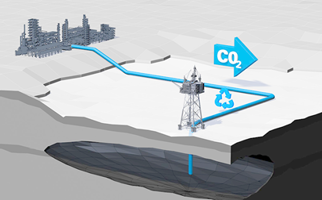
A joint study by the Oil and Gas Authority, Technology Leadership Board and the Oil & Gas Technology Centre has found that adopting data analytics and digital technologies for asset maintenance and operations could increase production and lower maintenance costs worth £1.5 billion annually to the UK Continental Shelf (UKCS).
The failure of critical equipment offshore, such as gas compression, oil export, power and water injection systems, resulted in lost production of around 110 million barrels of oil equivalent on the UKCS in 2017.
The study investigated how data from topsides production and operations equipment is currently being used, and can help sustainably improve production efficiency and maintenance planning, reducing operational costs.
More than 60% of the study’s participants reported that adequate data infrastructure is in place, with extensive sensor coverage across offshore assets and ‘good to excellent’ transmission and data storage capabilities.
A small number of North Sea and international operators are already benefitting from data analytics technologies, with case study examples including a 65% reduction in system outages and annual maintenance savings of more than £1 million per year on a single system.
However, the application of data analytics is not widespread and consistent across the industry or individual organisations. There is a lack of awareness as to what digital technology is available and, more importantly, the potential value it can deliver to a business. There is also a perceived high cost of implementing such technologies, and risk aversion to their deployment.
Furthermore, other industries, like power and utilities, and aviation, are more advanced than the oil and gas one, and have been using data analytics to transform the way they manage their assets, demonstrating large efficiency gains.
Adopting data analytics and digital technologies across the basin could deliver a 25% improvement in the reliability of critical equipment and systems and a 15-20% reduction in overall maintenance spend, resulting in an estimated £1.5 billion of value to the UKCS per year.
Recommendations to overcome these barriers, include:
- Assign ownership of these findings to the appropriate industry groups, like the Asset Stewardship Task Force (ASTF) and the Production Efficiency Task Force (PETF), to ensure an industry-wide understanding on how digital technologies can deliver value to UKCS operations;
- Issue the industry with a standard methodology for assessing their data analytics technology maturity and engage the industry leadership on opportunities to close the gaps;
- Through the OGA, engage operators on the deployment of digital technologies at their UKCS assets as part of their Technology Plans.
Scott Robertson, OGA CNS Area Manager, and Co-Chair of the ASTF, said:
“This study highlights the positive impacts which data analytics can have in transforming asset reliability and maintenance and also provides a great “Data Maturity model” which Operators can use for self-assessment purposes. There is great potential in using data analytics for a step-change in production efficiency, which is a key performance indicator in our industry.
"The ASTF, with the associated groups PETF and Asset Integrity Workgroup, will examine how to leverage the results of this study and work together with the industry on initiatives to share learnings and accelerate the adoption of this technology.”
The landscaping study report can be downloaded here.
Stephen Ashley, Digital Transformation Solution Centre Manager added:
“It’s widely recognised that oil and gas has been relatively slow to embrace the digital revolution when compared with other sectors. It’s encouraging to see some operators already benefitting from the application of data analytics, but these examples are too few and far between. As an industry, we need to harness the power of data if we’re to maximise economic recovery and unlock the full potential of the UKCS.
“We’re working with the TLB, Oil and Gas Authority and stakeholders from across industries to make the digital transformation of the oil and gas industry a reality. It is up to us to seize this opportunity, lead the change, inspire the next generation and create a diverse and connected, technology-led industry.”


